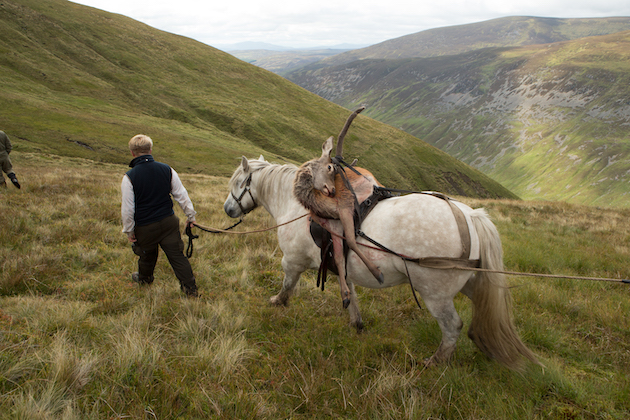Stalking gear for women – we test out Harkila’s Freja range
In Norse mythology, Freja was a warrior goddess. By naming its new woman’s stalking jacket and trousers after such a…
Win CENS ProFlex DX5 earplugs worth £1,149 – enter here
 Taking the shot deer of the hill with garion ponies
Taking the shot deer of the hill with garion ponies
I was never really interested in horses as a bairn. I grew up next to a Clydesdale farm, and though I’d occasionally give one a scratch, I was hardly champing at the bit to spend time with them — the local deer were far more interesting to me. (Take a look at our list of deer stalking clothing – this is what to wear.)
The notion of riding never took me either, so to end up working with horses was a bit unforeseen. After leaving college, I hoped I’d find a full-time gillie job, somewhere where I could put in the years and learn from experienced keepers. It didn’t work out that way and I ended up in the seasonal loop, but this has allowed me to work with so many different people and, more relevantly to this column, a few different ponies.
My first encounter with these stocky beasts was during my time on the Isle of Rum. The island, at the time, was home to 20-odd ponies, some old, some young, some that worked and others that would not. Prior to this point, my livestock experience was based purely on sheep and cattle — beasts that could be, to an extent, manhandled. Working with highly strung, 500kg animals that often said ‘no’ was a steep learning curve. It took me a while to learn every one’s name, let alone tell them all apart, but as I began to learn their individual personalities it became easier.
Norman was the oldest, his coat tattered with rain scald, his bones weathered and sore but, like some old men, Norman quite appreciated getting his sponge baths from young ladies. Brushing and bathing him required care, lest his coat fell apart in your hands or you pressed too hard on his sore bits — a lesson in gentleness that can sometimes be lost in this line of work.
Shuggie was the garron pony I worked the most here, and he’ll always be my favourite. He was grumpy, cantankerous and could shoot dirty looks right on cue. On the way up the hill he was solid and steady, but as soon as he was loaded he was full steam ahead — which would have been fine if we didn’t have to wait for others to catch up. The problem with Shuggie was that he didn’t want to stand while loaded. He’d shove you out of the way with his head, stamp, kick and bite — he did not want to wait, so holding him was always a fight. Later we found out that he had bad hooves — what was perceived as difficult behaviour was most likely pain. I’ve seen the same thing in people since.
After leaving Rum, I spent a season gillying with machines on an estate that once had ponies. The empty fields and old photos were stark reminders of the loss of the Highland garron.
In Norse mythology, Freja was a warrior goddess. By naming its new woman’s stalking jacket and trousers after such a…
The next estate I worked on had a garron pair of geldings. Though handsome, the other words I would use to describe the two of them would not be fit for print. These ponies were wee terrors on the hill — they’d bite, rear and bolt. But without the consistency of regular work and guidance, it was no real wonder. The pair, along with other characters on this estate, taught me a lot about patience and reserve.
The last estate where I worked with ponies had a herd of 11. They invested a lot of time into their care and training; here, the ponies were a passion, not an afterthought. I worked Trinity and Typha, my first mares. Typha taught me that horses were smarter than I had originally given them credit for. Trinity made me doubt that.
Ponies have given me patience, forced me to slow down and shown me how to change my approach to many things. I’m still not particularly enthralled with horses, but I’m grateful for the time I’ve had with them and the lessons they’ve taught me.
Get the latest news delivered direct to your door
Discover the ultimate companion for field sports enthusiasts with Shooting Times & Country Magazine, the UK’s leading weekly publication that has been at the forefront of shooting culture since 1882. Subscribers gain access to expert tips, comprehensive gear reviews, seasonal advice and a vibrant community of like-minded shooters.
Save on shop price when you subscribe with weekly issues featuring in-depth articles on gundog training, exclusive member offers and access to the digital back issue library. A Shooting Times & Country subscription is more than a magazine, don’t just read about the countryside; immerse yourself in its most authoritative and engaging publication.

